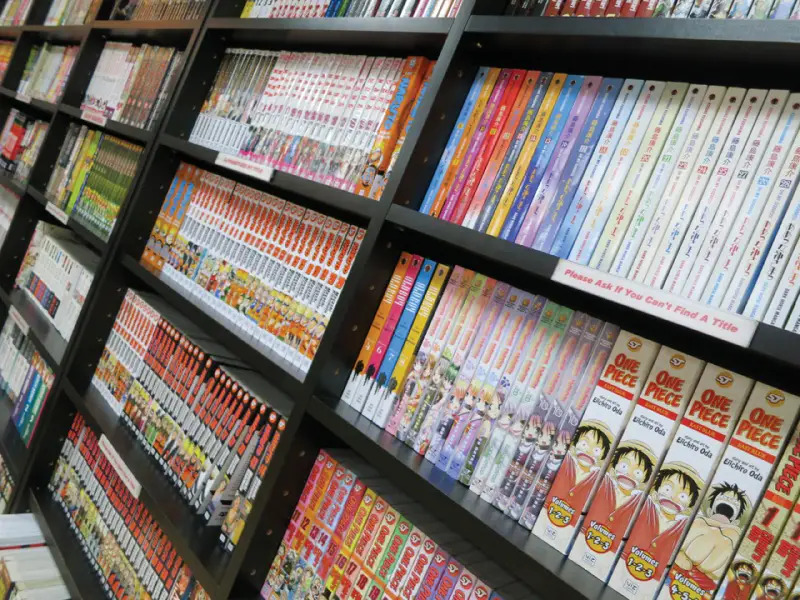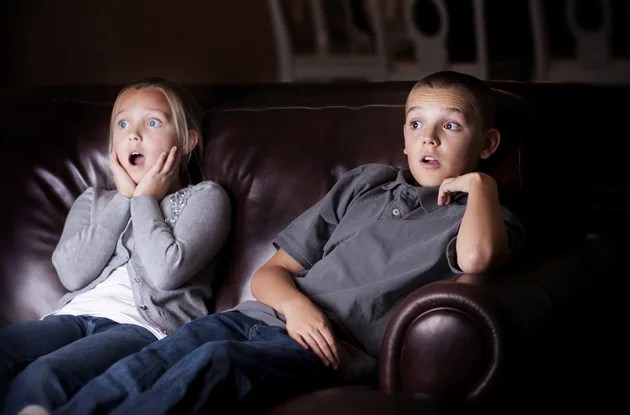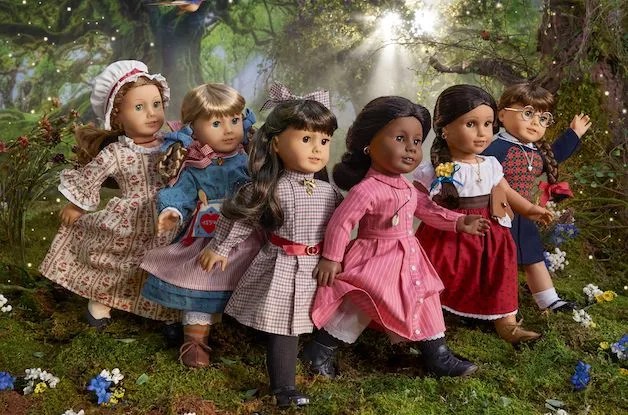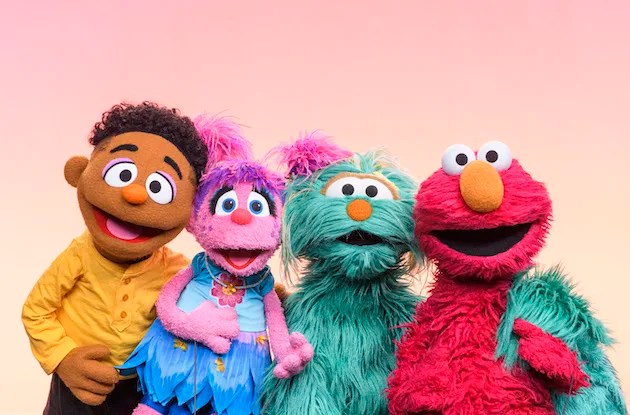Has your child shown an interest in anime or manga, but you’re not sure what is appropriate for them to see or read? We spoke to experts about the difference between anime and manga, where it came from, the cultural context and taboo topics that appear, and how to navigate the ratings of anime and manga.

Midtown Comics, which has four retail locations in Manhattan, as well as an online store, sells everything from comic books, anime, and manga to movies and action figures.
Colorful, highly stylized, and action-packed: Japanese animation has become increasingly popular among readers and viewers of all ages in the U.S., and parents should be aware of the origins of the genre and the cultural clues that drive the art form—and, more importantly, how to identify what’s appropriate, and inappropriate, for their kids.
Anime (an-uh-may), a Japanese style of motion picture animation, and manga (mahn-guh), Japanese printed comic books, are identifiable by their visual style. Comics fans will recognize the serialized approach to complex, character-driven storylines with figures that often possess unusual abilities or powers.
Comics caught on in Japan in the early 1950s as an alternative form of entertainment, and the cinematic, cartoony, action-based style became the genre trademark, says Shaenon Garrity, a writer and freelance editor for VIZ Media, which publishes and distributes Japanese manga for English-speaking audiences.
In the 1990s, anime became popular in the U.S., but manga really exploded among American readers around 2000. The style appeals to a wide audience, but young adult anime and manga typically falls into one of two umbrella categories: ‘shonen,’ geared toward tween and teen boys, with more action themes, and ‘shojo,’ for tween and teen girls, with more romance themes. Within those general categories, storylines are very diverse.
“Nowadays, you can see manga influence everywhere, from the more cinematic approach to storytelling in superhero comics to manga-styled Western comics like Scott Pilgrim,” Garrity says.
Cultural Context
Because comics and graphic novels rely more heavily on artwork than text to drive the story, readers may need a bit of practice to become comfortable with the format. Robin Brenner, librarian and author of Understanding Manga and Anime, tells readers new to the genre: “Basically, you’ll need practice.”
“It’s a different kind of active reading that does have a learning curve, so give yourself time and a few different titles to try reading manga,” she says.
For one thing, Japanese comics distributed in the U.S. are typically “unflipped,” with both panels and page numbers progressing from right to left. “Manga is a Japanese product that is brought over here with minimal adaptation, but readers here come to it with a different cultural background than the original audience. This can be confusing but also educational,” says Brigid Alverson, head editor of Good Comics for Kids blog, published by the School Library Journal.
Gestures, symbols, and expressions common in anime and manga may be unfamiliar at first, too. “Even in serious manga,” Alverson explains, “characters often suddenly become small, chubby, and cute when they experience extreme emotion, such as anger or embarrassment.” A large sweat drop near a character’s head is another sign of extreme emotion, and a small cross-shaped symbol on a forehead indicates anger.
Manga and anime regularly weave in cultural references, which can be confusing. Many stories are set in different eras, such as the Samurai period, or in Japanese high schools, which will be unfamiliar to most American teenaged readers, says Alverson. And Japanese honorifics, such as adding “-san” to a person’s name, are common even in English-language anime and manga. Books sometimes include translators’ notes to explain customs and culture referenced in the story, and contextual clues can help readers and viewers parse unfamiliar symbols.
Taboo Topics
Some content and themes commonly found in manga and anime could be cause for concern, depending on the age and maturity level of the reader or viewer.
“There’s sometimes material in Japanese young adult comics which American audiences might find objectionable,” says Jason Thompson, author of Manga: The Complete Guide.
For example, Japanese anime and manga display a more casual attitude toward cigarette smoking, violent themes, and nonsexual nudity. “When a character in a U.S. comic takes a bath, the water is opaque, while in a Japanese comic, the water is clear,” Brenner says. It’s incidental, not sexual, like a character taking a shower or accidentally walking in on someone changing clothes, she explains.
“The attitude toward death is also very different, with many characters lingering as ghosts after death, and a common manga trope is helping the restless ghost cross over and find peace,” Alverson says.
Navigating the Ratings
Like movies, video games, and other television shows, anime and manga are often labeled by a rating system to help parents navigate the variety and select the most appropriate shows and books.
Common Sense Media features reviews of television series and films, with a clear explanation of age appropriateness, to help parents decide which anime is best for their child and informs them about the themes kids might encounter. And as with any television show, parents should note the on-screen rating that appears throughout the show. Daytime and evening programming on channels geared toward children is generally appropriate for ages 13 and younger, but after 9pm content can be considerably more mature.
Most manga publishers in North America use a ratings system similar to the Motion Picture Association of America, explains Kate Dacey, a contributor to Good Comics for Kids blog.
‘All Ages’ corresponds to a ‘G’ rating, for example, and is appropriate for readers as young as 6, while ‘Youth’ is equivalent to a ‘PG’ rating, and is appropriate for readers 10 and older, Dacey says. ‘Teen,’ ‘Older Teen,’ and ‘Mature’ ratings indicate the presence of strong language, sexual themes (implied or explicit), and graphic violence. Ratings tend to be conservative, but label qualifiers like “violence” and “strong language” will help you decide what is appropriate for your child.
Rating labels are typically found on the back cover of each issue, and librarians and comic book store staff should be able to offer some guidance on specific books.
Nothing, however, beats looking through the pages yourself to become familiar with the style and make sure you’re comfortable with the content, Alverson suggests. “It’s not uncommon for manga to get more intense as the series goes on,” she warns. And as a general rule, steer clear of shrink-wrapped manga: It’s probably for readers 18 or older.
Also see:
The Pokemon Invasion: How Bad Is It Really?





















